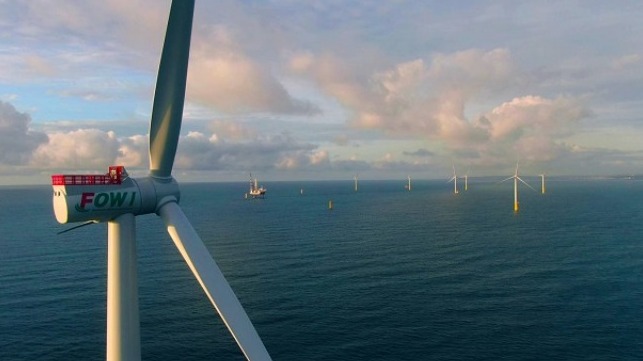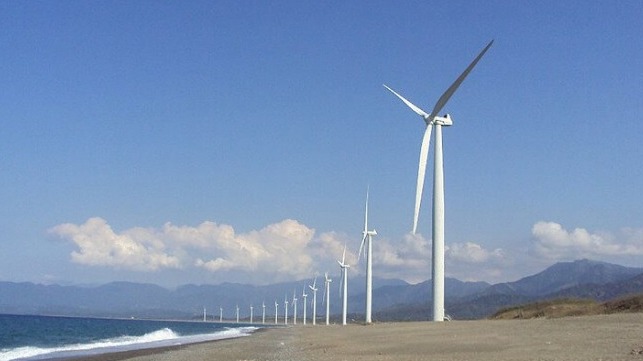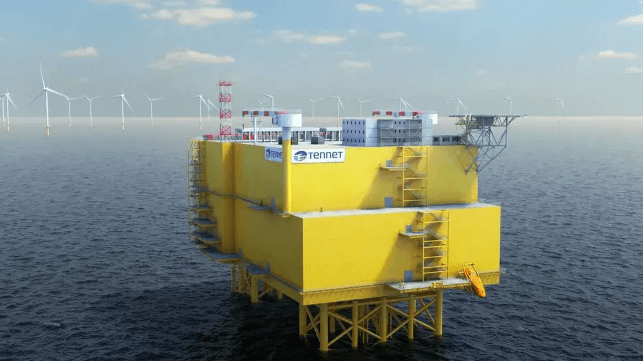Ørsted Moves Ahead With Additional Offshore Wind Sites off Taiwan

The Danish offshore wind developer Ørsted has taken a final investment decision to build the 920 MW Greater Changhua 2b and 4 offshore wind farms in Taiwan. These are among the four sites in the Taiwan Strait where Ørsted is developing 2.4 GW of offshore wind energy, all located about 20-30 nm off the coast of Changhua County, Taiwan.
The other two sites include the 900MW Greater Changhua 1 and 2a, whose construction begun in 2019 and commissioning of the wind farm’s last turbines is expected before end of this year. The Greater Changhua 1 hosts the world first pilot ReCoral concept by Ørsted, a project that sets out to discover whether offshore wind turbine foundations could provide an additional home where corals have the potential to flourish.
The 920 MW grid capacity of Greater Changhua 2b and 4 was awarded in June 2018 in Taiwan’s first competitive price-based auction, with no mandatory local content requirements.
Ørsted secured long-term revenues for the project by signing a corporate power purchase agreement (CPPA) in July 2020 with Taiwan Semiconductor Manufacturing Limited (TSMC), the largest contract of its kind in renewable energy.
According to Ørsted, the Greater Changhua 2b and 4 projects will be funded by capital provided by the company combined with debt capital sourced from the domestic Taiwanese market. The two offshore wind farms have already obtained all environmental impact assessment approvals.
The construction will begin this year and commissioning of the wind farms is expected in 2025.
“The sites’ investment decision demonstrates that Ørsted is primed and ready to build and operate large-scale offshore wind projects in Taiwan. We have full confidence that we will fulfill our commitments to the grid contract with the Taiwan authorities and the CPPA with TSMC,” said Per Mejnert Kristensen, President of Ørsted Asia Pacific.
Ørsted is also eyeing additional sites 20 nm off the coast of Taichung. The company is the biggest shareholder and co-owner of Taiwan’s first commercial-scale offshore wind project, Formosa 1, which was extended from a capacity of 8MW to 128 MW in 2019.
Philippines and CIP Agree to First Foreign-Owned Offshore Wind Farms

The Philippines Department of Energy signed contracts with Copenhagen Infrastructure New Markets Fund, an affiliate of Danish fund manager Copenhagen Infrastructure Partners, for what will become the country’s first wholly foreign-owned offshore wind projects. The contracts call for three wind farms with a combined capacity of 2,000 MW to be built by the Danish organization and run under 25-year operating licenses. The county has onshore wind power but is yet to start its first offshore project.
The Philippines recently lifted foreign ownership restrictions on renewable energy development. It is part of a program outlined by President Ferdinand Marcos, Jr. to accelerate the development of renewable sources of energy for the country. Niels Holst, Partner in CIP and head of CINMF, said the removal of foreign ownership restrictions on renewable energy projects in the Philippines in 2022 was an important development for his company as it gave them positive signals to launch investments in the country.
“We are pleased with the entry of CINMF, a dedicated fund manager with greenfield renewable energy investments and one of the global leaders in offshore wind,” said Energy Secretary Raphael P.M. Lotilla. “They will be bringing in financial muscle and technological heft and will be working with Filipino partners throughout the construction and operation phases.”
The three projects are to be developed in Camarines Norte and Camarines Sur, offshore of Northern Samar, and offshore of Pangasinan and La Union. Once implemented, the three projects are expected to create around 4,500 jobs during the development and operations period, generate enough power to supply about one million households, and offset about 2.9 million tons in CO2 emissions per year.
The Philippines and the Danish Government have a long-standing cooperation in the development of wind power in the country. The 25 MW Bangui Bay Wind Power Project, developed onshore in 2004 by the Northwind Power Development Corporation in Bangui, Ilocos Norte, was partly funded by the Danish Government through the Danish International Development Assistance (DANIDA). It was a landmark project that paved the way for developing onshore wind power projects in the country and the Southeast Asian Region.
Danish Ambassador Melbin said that the Filipino people deserve more reliable and cheaper electricity. Introducing large-scale renewable energy is the fastest way to achieve this he said.
The Philippines currently has no installed offshore wind operations. The World Bank estimates there is a potential for more than 178 GW of offshore wind in the country. Working with the World Bank, the Philippines Department of Energy last year released an initial plan for offshore wind development.
One of the country’s main power distributors, Aboitiz Power, is currently undertaking a feasibility study exploring the potential for up to 3 GW of offshore wind by 2040. They are expected to complete the study by mid-year.
The Philippines Department of Energy said to date, that 57 Offshore Wind Service Contracts have been awarded with a total potential capacity of about 42,000 MW that will be developed. The DOE targets to bring the renewable energy share in the power generation mix to 35 percent by 2030 and 50 percent by 2040 from the current 22 percent. The World Bank report set out a low estimate of just over 5 percent from offshore wind and a high growth potential to reach 40 percent of the country’s power supply from offshore sources by 2050.
Top photo of Bangui wind farm by Paolo Dala - CC BY-SA 2.0
TenneT Awards $25B in Contracts for Offshore Wind Power Transmission

Transmission network operator TenneT has announced a landmark package of contract awards for offshore wind cable and transmission station infrastructure in the North Sea. The $25 billion parcel of orders will supply 40 GW worth of power transmission capacity in German and Dutch waters, enabling two-thirds of the 65GW offshore wind energy target set by Germany, the Netherlands, Denmark, and Belgium.
"This is one of the most important infrastructure projects of the century; the green transformation of the energy system is key for the decarbonization of industry," said Tim Meyerjürgens, COO TenneT, in a statement Sunday. "Together we secure decisive acceleration of the offshore grid development and set the course for the future European energy landscape.”
The prime contractors include three consortia: Hitachi Energy/Petrofac, with six projects; GE/SMOP, with three projects; and GE/McDermott/Sembmarine, with two projects. Three more awards are expected to be announced soon.
Preparatory work will begin immediately, TenneT said, to ensure that the full scope will be finished on time in 2028-2031.
"We are already hiring to expand our global delivery capacity and effectively fulfill these and other orders," said Niklas Persson, Managing Director at Hitachi Energy Grid Integration.
The massive long-term contract package is part of a deliberate strategy to build and sustain a supply chain, giving vendors visibility into their project pipeline for years to come. TenneT worked with its partners to develop a standardized offshore platform, cable system and onshore substation design, which will be replicated across the portfolio. A set of much larger 2GW offshore platforms and a new 525 kilovolt HVDC power transmission system will reduce the number of grid connections required, cutting down on cost and seabed disturbance during installation. HVDC is also cheaper to build than an AC system for longer distances, and this new generation of infrastructure will be serving wind farms further offshore.
TenneT says that it has also taken long-term plans for an international subsea power transmission network into account in the design.
No comments:
Post a Comment